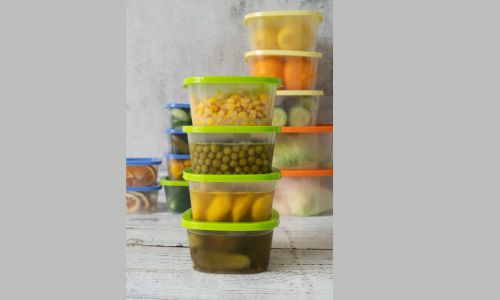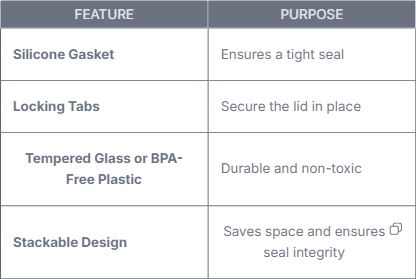

In today’s fast-paced lifestyle, keeping food fresh and uncontaminated is more important than ever. Whether you’re storing leftovers, meal-prepping for the week, or packing lunch for your kids, airtight food containers are essential. But how do you really know if a container is airtight? Not every container that “looks” secure actually keeps air out.
In this comprehensive guide, we’ll help you identify what makes a container airtight, how to test it at home, and why using airtight food containers can make a big difference in your kitchen and life.
What Does “Airtight” Really Mean?
The term “airtight” refers to a container’s ability to prevent air from entering or escaping. This is usually achieved through tight-sealing lids that fit perfectly and often include rubber or silicone gaskets. When no air can get in or out, food stays fresh longer, and odors are locked in or out—making airtight food containers a smart solution for both storage and hygiene.
Why Airtight Food Containers Matter
Before diving into how to test for airtightness, it’s important to understand why it’s worth the effort. Here are some real-world benefits of using airtight food containers:
- Keeps food fresh longer
- Prevents bacterial growth and contamination
- Stops strong odors from spreading
- Prevents spillage during transport
- Ideal for dry goods like flour, sugar, and cereals
5 Clear Signs That a Container is Airtight
Here are a few ways to spot whether your container is likely to be airtight, even before you run any tests:
- Rubber or Silicone Gasket in Lid
These flexible materials help create a vacuum-like seal, preventing air from getting in. - Snap-Lock or Click-Lock Mechanism
Airtight containers often have locking mechanisms that produce an audible “click” when closed properly. - Vacuum Seal Button (in advanced models)
Some premium containers come with built-in vacuum pumps or buttons to remove excess air. - Lid Fits Snugly With No Wiggle Room
A loose lid is a red flag. If you can wiggle the lid, it’s probably not airtight. - Material Quality
Containers made from BPA-free plastic or tempered glass are more likely to retain airtight properties over time.
Easy DIY Methods to Test Airtight Food Containers
Want to be sure your container is truly airtight? Try these easy home tests:
1. Water Submersion Test
- Fill the container with paper or tissue.
- Seal it and submerge it in a bowl of water.
- If bubbles rise, air is escaping, and it’s not airtight.
2. Light Test
- Place a small light source inside the container in a dark room.
- Seal it and look for escaping light around the edges.
- If you see any, the seal isn’t tight enough.
3. Bag Inflation Test
- Seal a balloon inside the container with a small amount of air.
- Wait 24 hours. If the balloon deflates, air is escaping.
4. Sound Test
Close the lid and listen for a “whoosh” sound.
This indicates air being forced out and a good seal forming.
Common Features of Airtight Food Containers
When shopping for new containers or reviewing the ones you already have, look for these common features:


